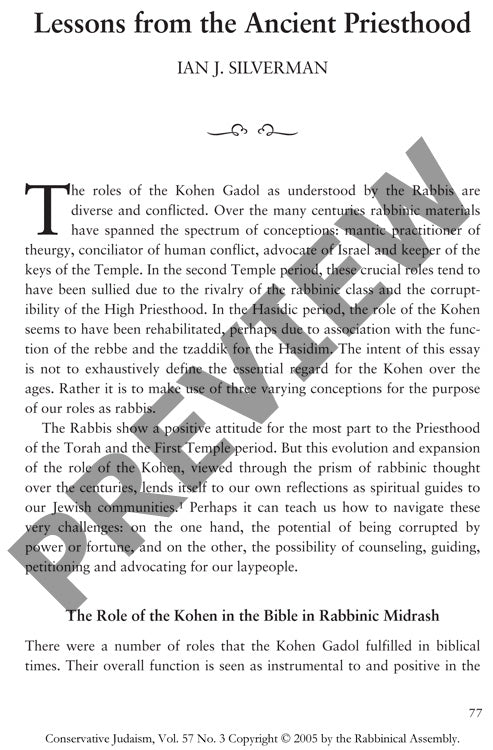Lessons from the Ancient Priesthood
Couldn't load pickup availability
The role of Judaism's High Priest (Kohen Gadol) underwent a dramatic transformation across three millennia - from revered spiritual leader to criticized figurehead to internalized archetype. Through analysis of rabbinic literature, talmudic sources, and Hasidic texts, a clear pattern emerges in how religious authorities perceived and reimagined this central leadership position. During the biblical and First Temple periods, rabbinic sources lauded the High Priest's multifaceted roles as divine intermediary, peacemaker, educator, advocate, and guardian of sacred artifacts. This positive regard deteriorated significantly in Second Temple period texts, which portrayed many High Priests as corrupt officials who pursued wealth and power over spiritual authenticity. Yet rather than reject the priesthood entirely, Hasidic mystics like Levi Yitzhak of Berdichev and the authors of Degel Mahaneh Ephraim and Mei Shiloah later transformed its meaning by internalizing priestly functions as spiritual archetypes accessible to all, particularly the tzaddik. Using comparative textual methodology, this analysis reveals how religious leadership roles adapt while preserving core spiritual purposes - offering vital lessons for contemporary rabbinical leaders about the corrupting influence of power and wealth, as well as the enduring importance of spiritual guidance, counsel, and community advocacy.

More Information
-
Physical Description
-
Publication Information
Published 2005
ISBN
-
Publication Credits
Ian Silverman

